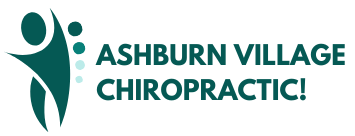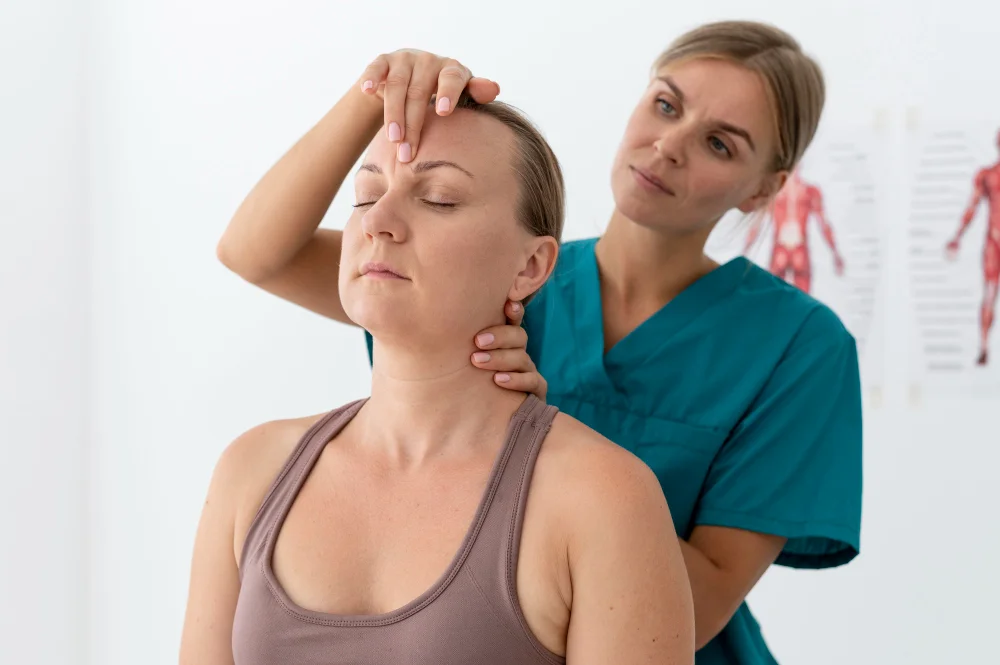Can a Chiropractor Help With Cervicogenic Headache
Cervicogenic headaches arise when irritated joints, discs, or muscles in the neck refer pain into the head. They often worsen with poor posture, repetitive neck strain, or ignored stiffness, and can easily become recurring and one sided. Understanding “can a chiropractor help with cervicogenic headache” involves looking at how precise spinal adjustments, soft tissue release, and postural correction reduce nerve irritation at its source. By restoring cervical alignment, improving mobility, and strengthening support muscles, chiropractic care helps lower headache intensity, decrease frequency, and support long term neck stability.
What Is a Cervicogenic Headache
A cervicogenic headache begins in the cervical spine and radiates upward into the head due to irritation of neck structures. The pain originates from dysfunction in the joints, discs, or soft tissues of the upper cervical region. These structures share nerve pathways with areas of the head, which is why neck-related irritation can produce headache symptoms. The discomfort often starts near the base of the skull and can spread to the forehead, temples, or behind the eyes. Unlike primary headaches, which stem from the brain or vascular system, this condition is secondary to neck dysfunction. Understanding can a chiropractor help with cervicogenic headache involves recognizing how spinal misalignment or restricted movement in the neck can trigger persistent or one-sided pain.
How Cervicogenic Headaches Differ from Other Types of Headaches
Cervicogenic headaches differ from migraines and tension headaches because their source lies within the neck rather than the brain or stress response. The pain typically remains on one side and may worsen with specific neck movements or prolonged posture. Unlike migraines, these headaches rarely involve sensitivity to light or nausea. They often develop gradually after neck strain, injury, or poor spinal mechanics. Pressure on the upper cervical nerves causes referred pain, which can mimic other headache types. Identifying the neck as the source helps guide appropriate treatment focused on restoring mobility and reducing nerve irritation.
Key Signs That Pain Originates from the Neck
Neck-related headaches present several characteristic symptoms that indicate spinal involvement. Discomfort often starts at the base of the skull and intensifies when turning or tilting the head. Limited neck motion, shoulder tension, and tenderness near the upper vertebrae are common. Some individuals experience pain radiating into the jaw, behind the eyes, or toward one temple. These patterns differ from vascular or sinus headaches, which usually feel more diffuse. Muscle tightness and stiffness across the upper back further confirm cervical contribution to pain. Recognizing these signs ensures that treatment targets the neck as the primary source of headache discomfort.
What Causes Cervicogenic Headaches
Cervicogenic headaches develop when structures in the neck irritate nerves that also transmit sensation to the head. Dysfunction in the upper cervical joints or surrounding muscles creates tension that refers pain upward into the skull. Poor posture, injury, or repetitive strain can cause the cervical vertebrae to shift from proper alignment, reducing joint mobility and increasing stress on nearby tissues. Over time, inflammation builds around the neck’s supportive muscles and ligaments, leading to recurring pain patterns. Understanding can a chiropractor help with cervicogenic headache begins with identifying how spinal imbalances, muscular tension, and postural stress interact to create this specific type of headache.
The Role of Cervical Spine Dysfunction and Muscle Imbalance
The cervical spine supports the head’s weight and relies on balanced muscle coordination to maintain proper alignment. When this balance is disrupted, small stabilizing muscles become overworked, while deeper postural muscles weaken. This imbalance strains joints, compresses nerves, and restricts natural motion between vertebrae. As a result, tension accumulates near the upper cervical region, where nerve pathways connect directly to the head. These mechanical stresses cause referred pain that mimics other headache types. Correcting joint restriction and restoring muscular symmetry are essential for relieving this discomfort and preventing further irritation within the neck’s soft tissues.
Common Triggers and Postural Stress Factors
Everyday habits often contribute to cervicogenic headaches by placing continuous strain on the neck. Prolonged screen use, forward head posture, and poor workstation ergonomics increase tension in the cervical and shoulder muscles. Carrying heavy bags on one side or sleeping with improper pillow height can also worsen alignment issues. Emotional stress intensifies muscle tightening, reducing circulation and joint flexibility. Repetitive activities that involve twisting or holding the head in one position for long periods compound the problem. Over time, these triggers create chronic postural stress that irritates nerves and amplifies headache frequency and intensity.
What Worsens Cervicogenic Headaches
Cervicogenic headaches intensify when the muscles, joints, and ligaments in the neck remain under continuous stress. Repeated strain or poor posture disrupts spinal alignment and increases pressure on the nerves that supply the head. When cervical structures lose flexibility, even small movements can trigger discomfort and referred pain. Lifestyle habits that limit neck motion or promote slouching make recovery slower and more difficult. Understanding can a chiropractor help with cervicogenic headache includes recognizing how these aggravating factors can prolong inflammation and restrict healing if left uncorrected. Preventing these triggers plays a key role in managing long-term neck and headache relief.
Repetitive Neck Strain and Prolonged Screen Time
Frequent bending or rotating of the neck strains the supporting muscles and small joints of the cervical spine. Continuous screen use, especially with the head tilted forward, increases the load on neck tissues severalfold. Over time, this posture weakens stabilizing muscles and compresses joints, causing irritation that radiates toward the head. The sustained tension reduces blood flow and increases fatigue in the upper spine. Without rest or corrective movement, this repetitive strain creates chronic stiffness that often triggers or worsens cervicogenic headaches. Restoring posture and mobility helps reduce the recurrence of this pain pattern.
Poor Posture and Weak Spinal Support Muscles
Slouched or uneven posture disrupts the natural curvature of the cervical spine, forcing muscles to work harder to support the head. Weak stabilizing muscles around the shoulders and upper back allow the neck to shift forward, straining deeper postural structures. This imbalance places uneven pressure on the joints and ligaments responsible for smooth neck motion. Over time, restricted movement leads to inflammation that radiates into the head, producing cervicogenic discomfort. Strengthening spinal support muscles and maintaining balanced alignment are essential to prevent ongoing tension and reduce the frequency of headache episodes.
Ignoring Early Neck Pain or Restricted Movement
Early stiffness or mild neck pain often signals developing imbalance or inflammation within the cervical spine. Ignoring these early symptoms allows joint restriction and muscle tightness to progress. As mobility decreases, tension spreads to surrounding tissues and begins to irritate connected nerve pathways. This cascade amplifies headache frequency and intensity over time. Prolonged neglect may also lead to structural adaptation, where muscles shorten and joints lose flexibility. Addressing symptoms promptly through guided care and corrective therapy prevents chronic pain and helps restore healthy spinal mechanics before they become long-term problems.
How Chiropractic Care Helps Relieve Cervicogenic Headaches
Cervicogenic headaches originate from dysfunction within the cervical spine and surrounding soft tissues. Chiropractic care focuses on correcting these structural imbalances through gentle, precise techniques that restore normal neck motion and reduce nerve irritation. By improving spinal alignment, chiropractic treatment decreases inflammation and enhances communication between the neck and upper back muscles. This approach addresses the source of pain rather than only masking symptoms. When evaluating “can a chiropractor help with cervicogenic headache”, clinical evidence supports that targeted chiropractic care helps relieve discomfort, restore flexibility, and prevent future recurrences by stabilizing the cervical region.
Restoring Cervical Alignment and Joint Mobility
Proper spinal alignment ensures that each vertebra moves smoothly and supports balanced tension throughout the neck. When joints become restricted, they compress surrounding nerves and reduce flexibility. Chiropractic adjustments restore motion between vertebrae, allowing the joints to function naturally. Improved alignment reduces mechanical stress, enhances circulation, and relieves the tension that radiates toward the head. Over time, these corrections promote better posture and movement, reducing strain during daily activities. Maintaining alignment helps prevent repetitive irritation that often triggers cervicogenic headaches and neck stiffness.
Reducing Nerve Irritation and Muscle Tension
Cervicogenic headaches often result from nerve compression caused by joint misalignment or tight muscles in the upper cervical region. Chiropractic techniques relieve this pressure by adjusting the vertebrae and releasing nearby muscle tension. As nerve irritation subsides, communication between the brain and spinal tissues improves. This change helps normalize muscle tone and restore coordination throughout the neck and shoulders. Relaxed muscles allow smoother motion, reducing the likelihood of future flare-ups. Consistent care helps keep these nerves free from compression, creating long-term relief from headache-related discomfort.
Gentle Spinal Adjustments and Manual Therapy
Chiropractic adjustments for cervicogenic headaches rely on controlled, gentle movements that target the affected cervical joints. Manual therapy complements these adjustments by improving soft tissue flexibility and reducing stiffness in the upper spine. Techniques such as mobilization and light pressure restore balance across the neck and shoulders without discomfort. This combination promotes healing by improving blood flow and easing strain on irritated structures. Each session is customized based on the patient’s spinal condition to ensure safety, comfort, and lasting results.
Targeted Soft Tissue Release for the Neck and Shoulders
Soft tissue therapy addresses tight muscles and connective tissues that restrict movement and contribute to headache pain. Focused pressure on trigger points releases tension and restores muscle elasticity. This improves oxygen delivery to the affected areas and accelerates recovery. Releasing tightness in the upper trapezius and suboccipital muscles also reduces the pulling force on the cervical spine. As balance returns, the neck moves freely, and the strain responsible for cervicogenic pain decreases. Combining soft tissue release with chiropractic adjustments ensures complete relief from both joint and muscular stress.
Postural Correction and Therapeutic Exercise Integration
Postural imbalance places continuous strain on the cervical spine and shoulders. Chiropractic care integrates corrective exercises that retrain muscle groups to maintain alignment during movement. Strengthening deep stabilizing muscles prevents forward head posture, which often worsens neck-related headaches. Targeted stretches improve flexibility, reduce tension, and reinforce balanced posture throughout the upper body. These therapeutic exercises complement adjustments by supporting structural changes made during care. Over time, improved posture reduces the frequency of headaches and enhances spinal endurance.
Supporting Long-Term Neck Stability and Headache Prevention
Sustaining headache relief requires consistent spinal care and proactive strengthening of the neck and shoulder muscles. Regular chiropractic maintenance keeps vertebrae aligned and prevents motion restrictions from recurring. Continued focus on posture, flexibility, and ergonomic habits minimizes mechanical stress during daily activity. When the cervical spine remains balanced, blood flow and nerve function stay optimal, reducing headache recurrence. Long-term stability ensures that the neck maintains its natural curvature, supporting both comfort and resilience against future cervicogenic pain.
Cervicogenic Headache Treatment at Ashburn Village Chiropractic
At Ashburn Village Chiropractic, Dr Jonathan Solomon leads each visit and delivers personalized care for headache and cervical spine issues. The clinic features on-site x-ray imaging to assess spinal alignment and identify mechanical dysfunction as a cause of head pain. Dr Jonathan Solomon employs gentle chiropractic adjustments and state-of-the-art physiotherapy equipment to restore neck mobility and relieve headache symptoms. This practice emphasises a holistic, drug-free, non-surgical approach that addresses both the upper cervical joints and surrounding soft tissues to support long-term headache relief.

